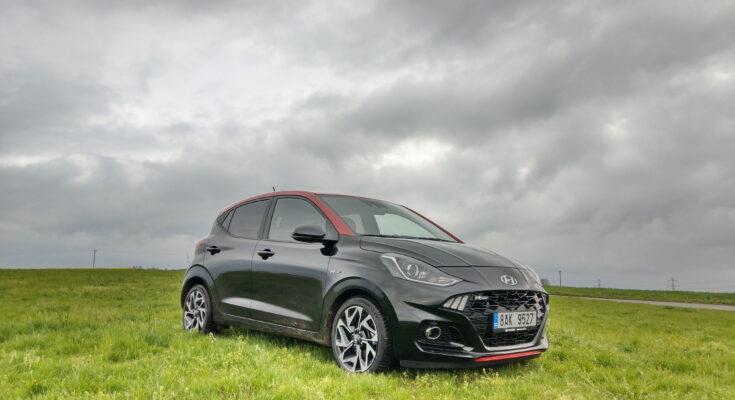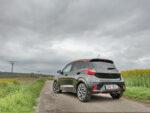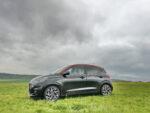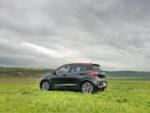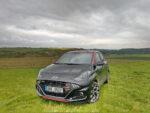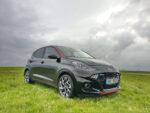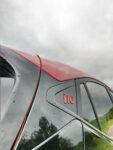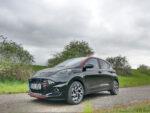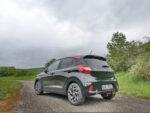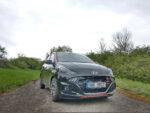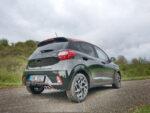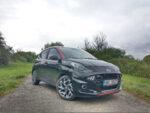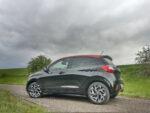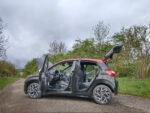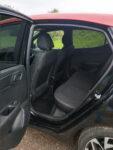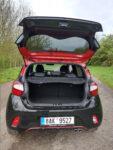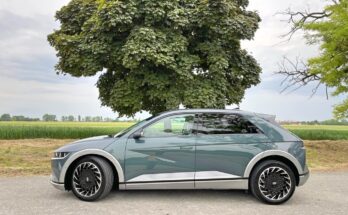The production of the Hyundai car company has recently been very rich, not only in the form of new models, but also in the modernization of existing ones. Hyundai is also trying to appeal to sporty customers, and its sharp "enque" version quite successfully complements the N Line packages, which are already permeating the car company's portfolio.
Our currently tested car is proof of that. Hyundai has decided to supplement its smallest member of the stable with this sharper version, which is definitely not presented just with some cheap optical package.

The new third generation of the "ten" has undergone minor proportional corrections, the car is now lower and at the same time wider, and now it has a longer wheelbase of approx. 4 cm. Thus, the Hyundai i10 visually became significantly more powerful for us, and thanks to imaginatively designed details, it now looks significantly better.
The advertised robustness is then widely applied, for example, when looking at the rear of the car. The fenders above the rear wheels are gently pushed out of the body, and the car thus has a relatively sure and stable stance.
The front part will offer elegantly cut headlights, a richly shaped bumper and a voluminous front mask. The N Line version then has differently shaped elements of the daytime running lights, in addition, discreet red-colored fillings of the cooling grille itself are humorously placed within the front mask. The red color covers the entire surface of the roof, and distinctive red lines underline the car's dynamic style in the lower parts of both bumpers.
We must not forget a pair of honest chrome "laufs" or elegantly shaped 16" wheels.
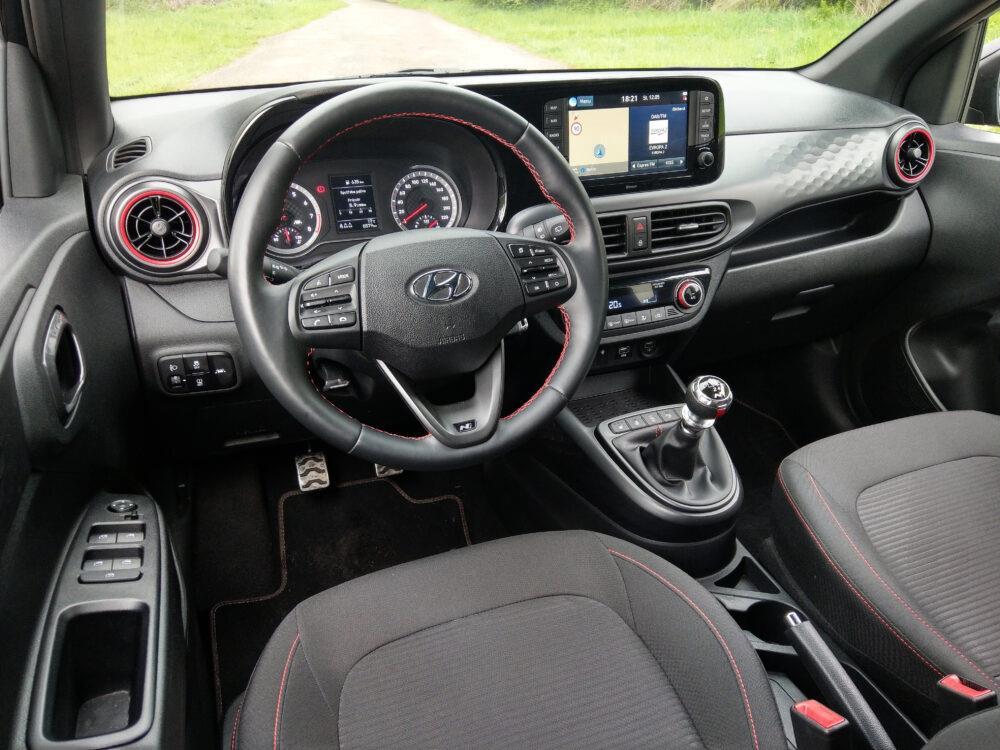
We already informed you about the interior itself in the previous test of the classic i10. Its layout is fully in the spirit of the car company's current trend. The interior is thus clear and ergonomically well managed. Among its weak points, I include the presence of harder and cheap-looking plastics.
The dashboard of the third generation now combines the instrument panel in front of the driver with the on-board infotainment display into one compact unit. In the instrument cluster in front of the driver, there are two classic analog indicators, a speedometer and a tachometer, as well as a digital display of the on-board computer.
It is the same with the on-board infotainment display, which still has the same environment, only with slightly better graphics. It goes without saying that you can connect via Apple Car Play or Android Auto.
The N Line trim level visually enriches the interior of the i10 with distinctive red stitching, which is visible both on the seats, the multifunction steering wheel, and in the areas around the gear lever. It also has a sports head with the N logo. The air conditioning vents themselves are also colored red.
The interior space of the new generation i10 is quite spacious, even in the rear seats, where the intergenerational increase in the car's wheelbase has had a very positive effect.
The luggage compartment itself has a basic volume of 250 liters and has relatively decent floor plan dimensions.

The Hyundai i10 is currently available with three petrol engines. The basis is a liter three-cylinder engine with 67 horsepower, the next option is a four-cylinder twelve-cylinder engine with 84 horsepower. The tested top version of the i10 N Line will also offer a turbocharged liter engine with a power of 100 horsepower. All engines are connected only to a classic five-speed manual.
The announced supercharged three-cylinder is therefore only intended for the N Line equipment level, its 74 kW of power (100 hp) and 172 Nm of torque give this predominantly urban vehicle a decent amount of agility and nimbleness. After all, the little i10 does it from 0-100 km/h in a respectable 10.5 seconds.
The performance of the turbocharged three-cylinder is slightly embarrassed at low revs, but as soon as the effect of turbocharging comes into play, it is completely different. A slight smile appears on your face and you bet one qualt after another, but you must not let it expire.
And while we're talking about "betting", here I have to unequivocally praise the backdrop of the five-speed manual, the shifting paths are ideally short and precise.
A very pleasant surprise for me was the behavior of the i10 N Line on the highway. It manages the highway limit with a really great overview and keeps the revs somewhere around three thousand. If it is necessary to overtake, it very willingly and noticeably accelerates beyond the speed limit.
The turbocharged three-cylinder also pleases with its consumption, personally I did not spare it at all during the editorial test and the consumption was still around an average of 6.5 liters per 100 km.
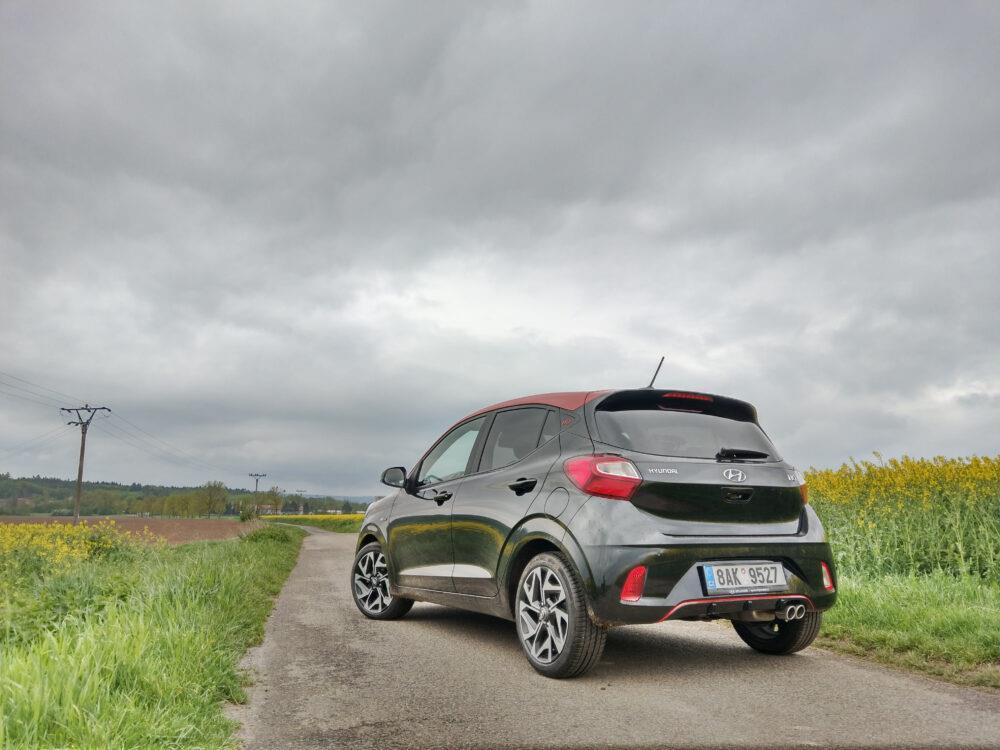
You can buy the new generation Hyundai i10 at a promotional price starting at a decent 229,900 CZK including VAT. This is a basic variant with Start equipment, a liter engine and a five-speed manual transmission.
Hyundai i10 is also available in COMFORT, SMART, N Line, STYLE and N Line STYLE trim levels. The tested N Line equipment with a turbocharged liter engine starts at 369,990 CZK including VAT. The top of the price list, which our car also had, is the N Line STYLE equipment. You can buy a car equipped in this way from CZK 389,990 including tax.
There is also an additional Premium N line package, which enriches the car with a roof in a different color design, integrated navigation with an 8" touch screen, or a traffic sign recognition function.
The Hyundai i10 of the third generation is definitely a great car that can offer a "cool" exterior and, by the standards of its class, also a spacious interior. The currently tested N Line brings to the car a rich equipment and a decent sporty character, which is supported by a dynamic external appearance and, above all, a potent gasoline engine.
Source: Author's text
Image source: Author's own photos

